Publication in ESSD – global peat depth database

How can we better understand the role of peatlands in the Earth system? The answer lies in Peat-DBase v1.0 – the largest and most comprehensive peat thickness database in the world. In a study published in Earth System Science Data, co-authored by Sambor Czerwiński, more than 200,000 measurements from across the globe were compiled – […]
Publication in Quaternary International – reflectance in paleofire studies
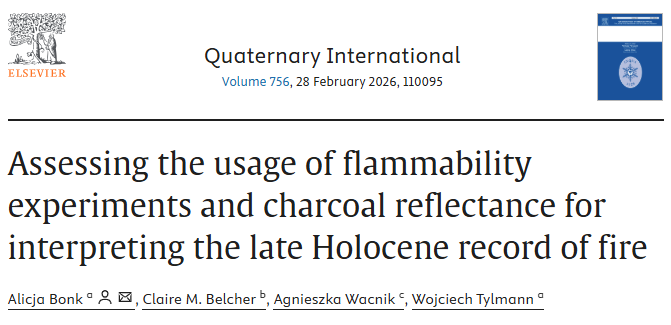
An article titled “Assessing the usage of flammability experiments and charcoal reflectance for interpreting the late Holocene record of fire” has just been published in Quaternary International. The first author of the publication is Alicja Bonk, and the co-author team includes Wojciech Tylmann. The authors proposed a new approach to reconstructing past fires by combining […]
Publication in Anthropocene – hypoxia and primary production in Masuria
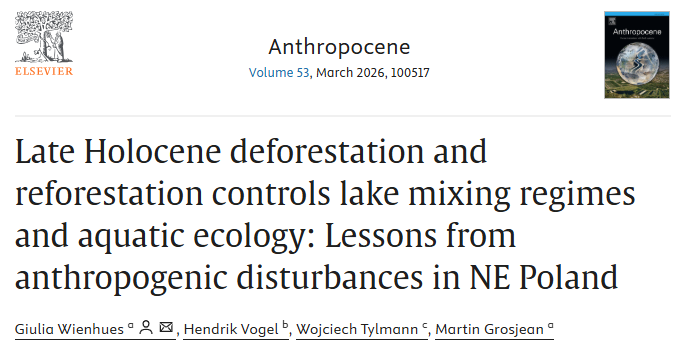
Changes in oxygenation and lake productivity vary over time. One of the most important factors controlling these processes is land cover in the catchment area. The team, which includes Wojciech Tylmann, analyzed the impact of land-use changes and human activities on the mixing of lakes located in the Masurian and Suwałki regions. In an article […]
Publication in Anthropocene – hypolimnetic anoxia development

Water bodies, especially those located in urban areas, can respond very quickly to pollution. A research team including Wojciech Tylmann analyzed this process using the example of Maljalahti Bay, situated near the city of Kuopio in Finland. The ecosystem’s responses to events such as sewage discharge, construction of a wastewater treatment plant, and the installation […]
Publication in Ocean Coast. Manag. – Shoreline Management in China
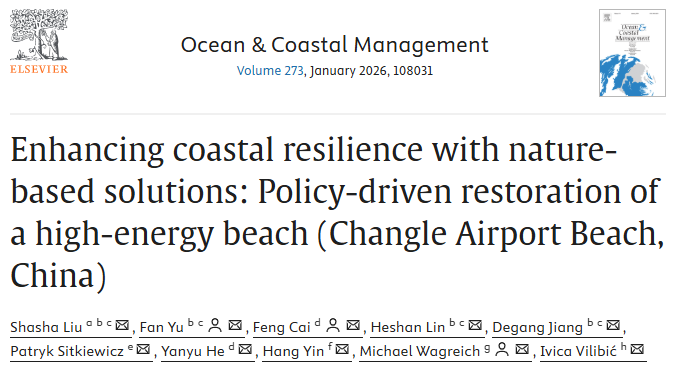
Although December weather still surrounds us and the calendar shows 2025, we are moving forward in time and sharing our first publication for 2026. Together with Patryk Sitkiewicz, we explore a place we have never visited before – a high-energy coastline along the Taiwan Strait in China. A series of fascinating shoreline restoration measures were […]
Publication in PAGES Magazine – HSI and μXRF
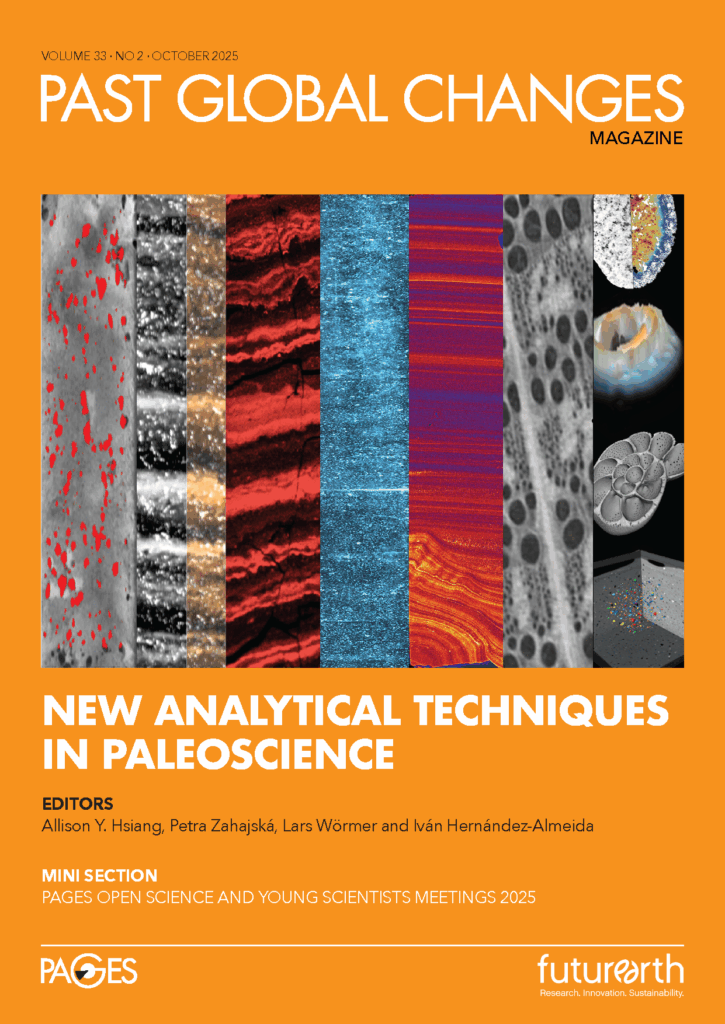
In the latest issue of PAGES Magazine (Past Global Changes), an international scientific organization supporting research on past climate and environmental changes to better understand their mechanisms and future impact, you’ll find a “Science Highlight” focused on combining μXRF and HSI data. Maurycy Żarczyński and Paul Zander present the principles of both techniques, the possibilities of integrating […]
Publication in Biogeosciences – peatland alkalinisation
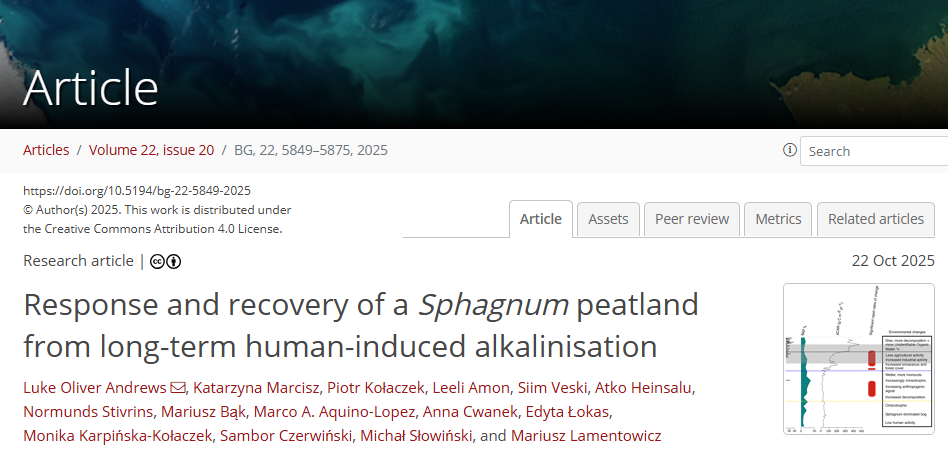
In a new publication co-authored by Sambor Czerwiński, the authors demonstrate how pollution from cement plants affects peatlands, using an Estonian peatland as a case study. It turns out that even a small increase in pH by 0.2–0.3 can trigger lasting changes in the ecosystem, particularly impacting Sphagnum, a moss highly sensitive to alkalization. The […]
QSR paper – seismites of the Southern Baltic
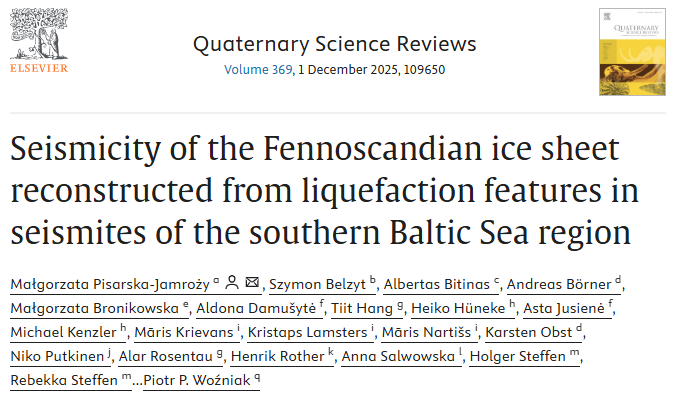
A major achievement – in terms of subject matter (ice sheet), research area (five countries!), and scope! A newly published article summarizes the GREBAL project, focusing on sedimentary records of seismic events related to the presence of ice sheets. During the Pleistocene, the Baltic Sea region experienced numerous seismic events triggered by the loading and […]
Paper in Sedimentology – Saalian eskers
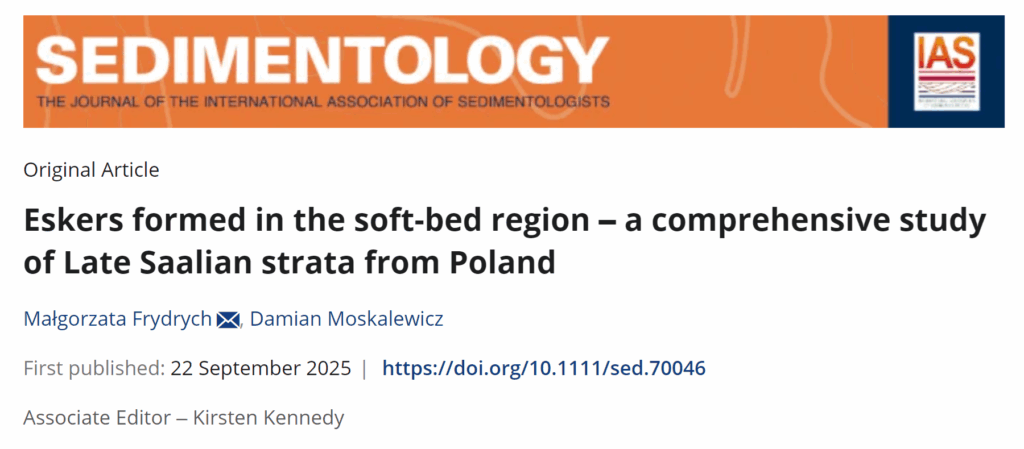
We invite everyone interested in landform features related to fissure accumulation to read the latest article co-authored by Damian Moskalewicz and our colleague from the Department of Physical Geography at the University of Łódź. How did eskers form during the Middle Polish Glaciation (Saale)? How did the succession of lithofacies evolve, and can advanced statistical […]
Paper in ESR – multiproxy research on peatlands
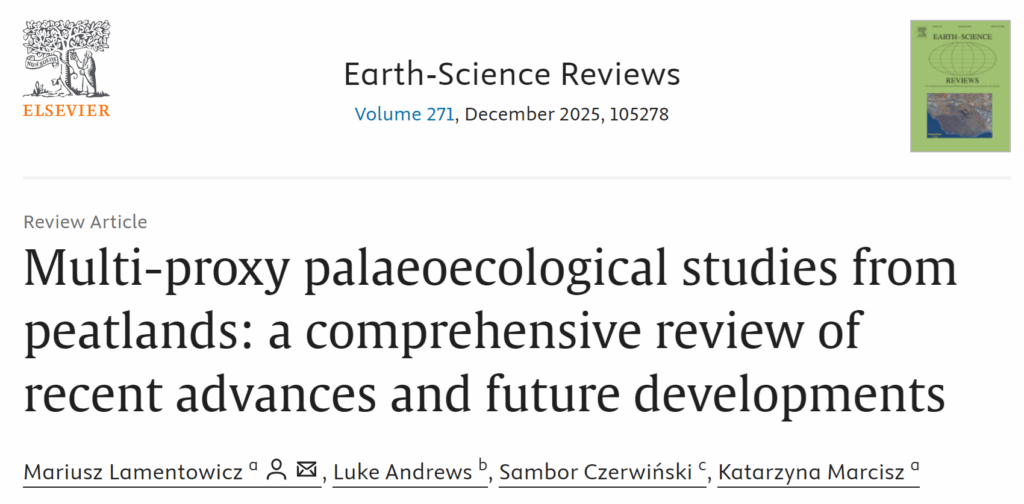
Our colleagues from Instytut Geoekologii i Geoinformacji UAM, in collaboration with Sambor Czerwiński, have undertaken a summary of the latest advances in peatland research using a multiproxy approach – combining various indicators such as pollen, plant macrofossils, testate amoebae, biomarkers, and stable isotopes. Peatlands prove to be exceptional archives of climate change and human impact […]